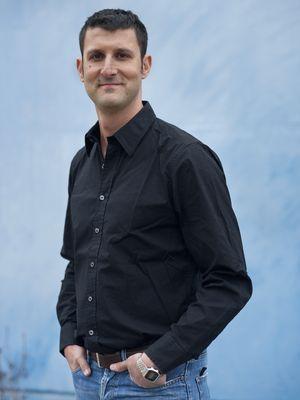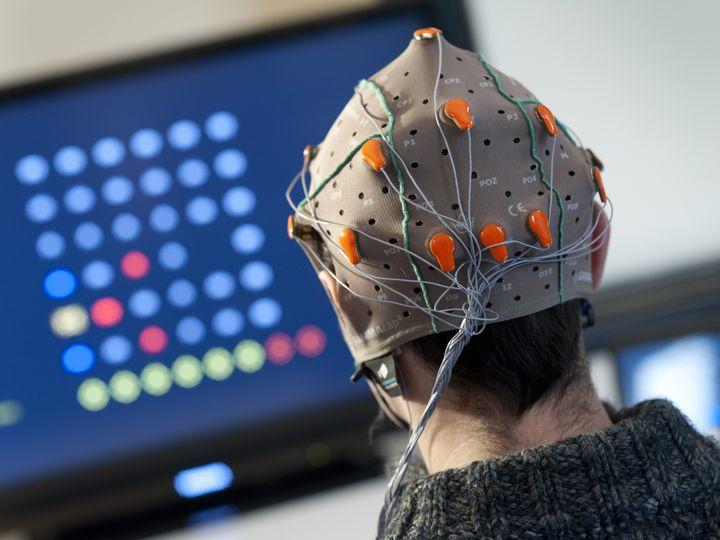Anatole Lecuyer has been working in the field of virtual reality (VR) for more than 20 years. He invented the term “pseudo-haptic ” while studying for his PhD to describe how visual feedback can induce either haptic or tactile sensations, including with passive accessories such as computer mice. He would later play a key role in the introduction of BCI into research into VR, while over the course of the last decade he has directed OpenViBE , a project whose freeware is now used by researchers throughout the world for the real-time processing of brain signals.
Anatole Lecuyer is currently an Inria director of research in Rennes. In 2001, he successfully completed a PhD in IT at Paris-Sud University, before going on to study a professorial thesis in IT at the University of Rennes. He has directed the research team HYBRID , made up of 40 individuals and dedicated to research into VR, at the Inria research centre in Rennes since 2013. He is interested in a vast array of scientific subjects, and has published more than 250 articles on science, covering VR, haptics, human-computer interaction, BCI, neuro-engineering and human perception. He was also co-editor of the book “Human walking in virtual environments”. In 2013, he was awarded the “Young Researcher” prize by the French Academy of Sciences and Inria.
Anatole Lecuyer entered the field of VR in 1998, where he began by exploring the potential of haptic interfaces in VR applications for use in aeronautics. His best-know result in relation to haptic feedback is the “pseudo-haptic” concept, a term he coined in 2000 during his PhD research. Pseudo-haptic feedback generates haptic sensations by playing on visual effects, at the boundaries of sensory illusions. This approach was subsequently adopted for use in a wide range of interaction contexts. Since that time, Lecuyer has promoted an approach to VR that is based on human perception, inventing a variety of techniques exploiting the limits and properties of human perception. This has included real-time visual attention models for VR, depth-of-field blurring effects based on view, camera movements geared towards improving the sensation of walking and haptic feedback for producing the sensation of movement. He is currently studying avatars, and the development of a “virtual self ” by combining physiological information with haptic interactions in order to create ever more realistic virtual incarnations.
In 2005, he began studying brain-computer interfaces for use in 3D interaction with virtual environments, making direct use of brain activity and electroencephalography (EEG). He played a decisive role in the introduction of this technology to the world of VR, designing what was one of the first interactive systems to combine VR and BCI, such as video games controlled directly using brain waves. He contributed towards the democratisation of BCI by helping to write a number of review articles and as director of the OpenViBE (open source software) project, a role he has occupied since 2009. OpenViBE is one of the best-known and mostly widely-used BCI programs, with more than 70,000 downloads. In 2012, Lecuyer co-founded the start-up Mensia Technologies, with the goal of developing medical products based on OpenViBE for use in digital brain therapy, including the treatment of attention disorders.
Anatole Lecuyer has served the virtual reality community for more than ten years now, most notably as Program Chair of the IEEE’s conference on virtual reality (IEEE VR) in 2015 and 2016, as General Chair of the IEEE symposium on 3D user interfaces (IEEE 3DUI) in 2012 and 2013 and as General Chair of the IEEE symposium on augmented reality (IEEE ISMAR) in 2017. He is currently the associate editor of the journals IEEE Transactions on Visualization and Computer Graphics, Presence and Frontiers in Virtual Environments . He has also been secretary of the IEEE’s technical committee on haptics and of the French Association of Virtual Reality.

